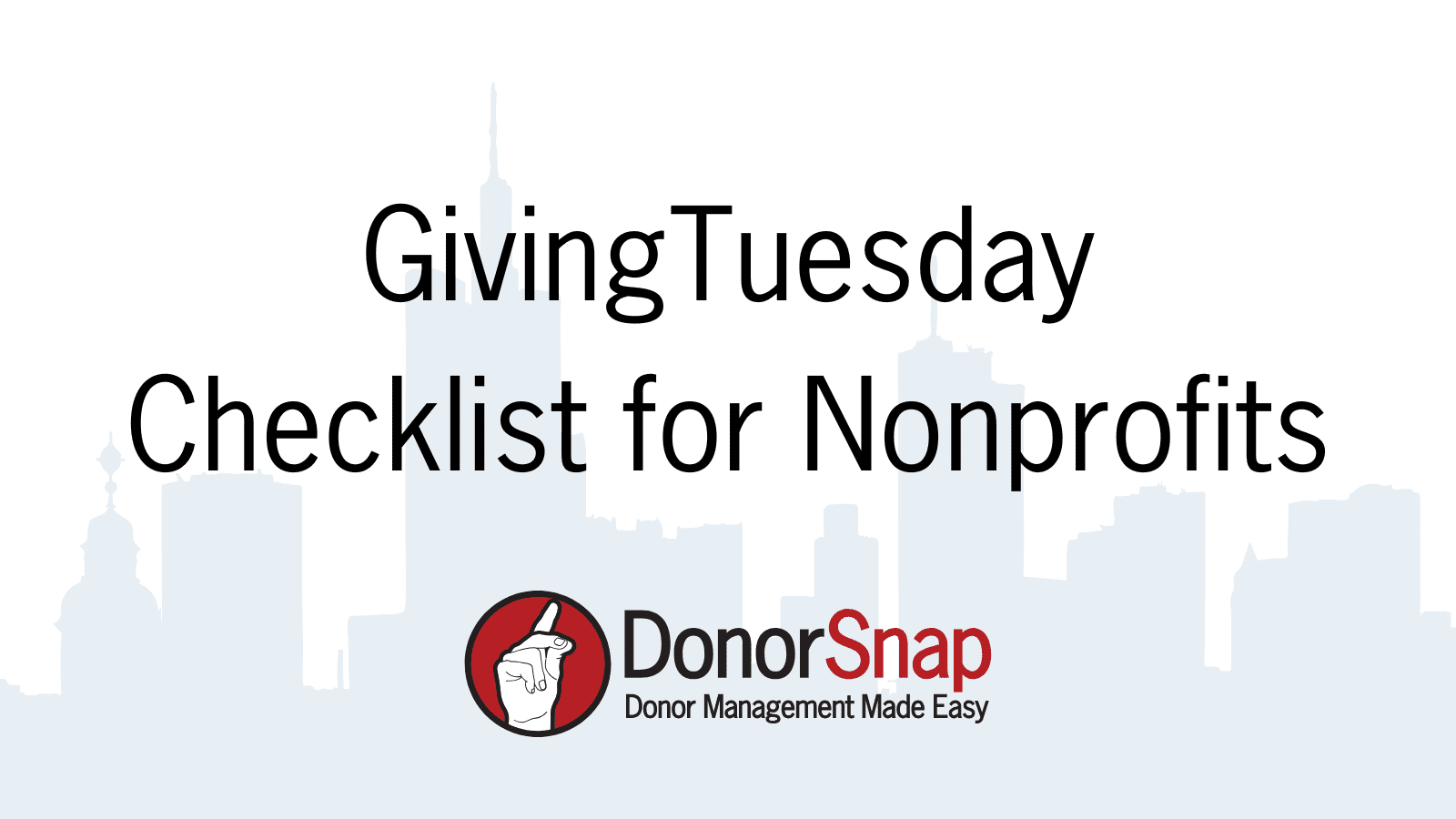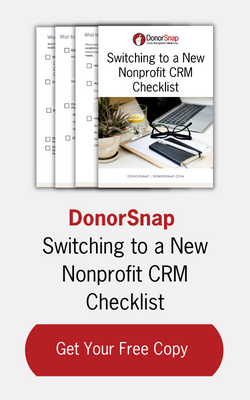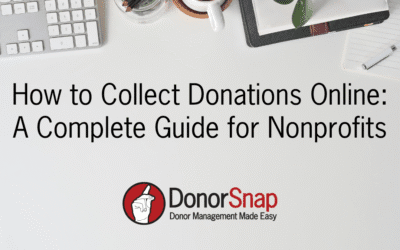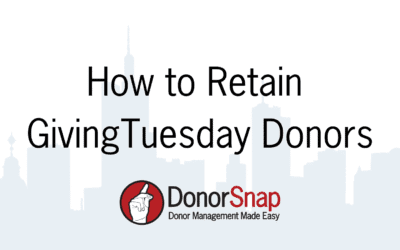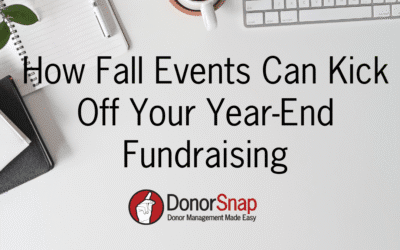GivingTuesday is a global day of generosity that rallies people to do good together. In 2024, donors, volunteers, and advocates again showed up in force. Early tallies from sector reports indicate U.S. giving remained strong, with millions participating across causes, channels, and communities. Beyond dollars raised, 2024 saw wider participation by small-dollar donors, more peer-to-peer fundraising, and deeper collaboration with local GivingTuesday coalitions. Any nonprofit, and every community member can take part.
This updated checklist covers everything your nonprofit needs to participate in GivingTuesday in 2025. You’ll find key dates, tested tactics, and a practical plan that fits your capacity.
What is GivingTuesday?
GivingTuesday is a global movement that encourages people to do good—through donations, volunteering, advocacy, or simple acts of kindness. Every nonprofit can take part, no matter your size or mission. Many organizations run social media campaigns, host events, and rally volunteers. Supporters donate to their favorite causes, spread the word, and invite friends to join.
There are no rigid rules. You can design a campaign that matches your goals, capacity, and community.
When is GivingTuesday 2025?
In 2025, GivingTuesday takes place on Tuesday, December 2, 2025.
Since 2012, GivingTuesday has fallen on the Tuesday after Thanksgiving in the United States. With Black Friday and Cyber Monday driving high consumer activity, GivingTuesday offers a moment to refocus on generosity and community impact.
What changed in 2024—and what it means for 2025
Here are key trends from 2024 you can apply to your 2025 plan:
- Participation broadened: More small gifts, more peer-to-peer fundraising, and more people giving time and skills, not just money. Build options for donors at every level and for non-monetary supporters.
- Matching gifts performed well: Hourly or day-long matches and challenge gifts helped campaigns surge at key times. If possible, line up at least one match window.
- Local coalitions amplified reach: Regional GivingTuesday networks and issue-based collaboratives helped organizations share audiences and resources. Explore a local hub or coalition to co-promote events or content.
- Short-form video and creator partnerships grew: Reels, TikTok, and YouTube Shorts helped nonprofits tell quick, compelling stories and drive action. Plan a handful of short videos that highlight impact, a volunteer story, or a quick “how to give” guide.
- Mobile-first giving increased: Donors acted from email, social posts, and text messages. Keep your donation forms fast, accessible, and mobile-friendly.
How Should My Nonprofit Prepare for GivingTuesday?
GivingTuesday’s website offers plenty of starter kits and templates. Use those—and this guide—to build a simple, realistic plan that syncs with your year-end efforts. Anything you do to prepare for year-end giving will help you succeed on GivingTuesday.
1. Decide how your nonprofit will participate
There’s no one right way to join in. Choose an approach that aligns with your capacity and your goals:
- Run a giving campaign with a clear, time-bound goal
- Host or join a community event with partner nonprofits
- Rally volunteers for a specific, high-impact project
- Launch a peer-to-peer effort or ambassador program
- Use social media to elevate stories and advocacy actions
- Blend any of the above for a multichannel push
Be specific. Define the one outcome that matters most (e.g., raise $25,000 for the food pantry, recruit 50 new monthly donors, or sign up 100 volunteers).
2. Plan your message
Your message should revolve around your single, measurable goal and the change it fuels. A simple framework:
- Problem: State the need in clear terms your audience cares about.
- Solution: Explain what you’ll do and why it works.
- Cost of impact: Tie dollars or time to tangible outcomes (e.g., “$40 fills a backpack with weekend meals”).
- Urgency: Explain why acting on GivingTuesday matters (e.g., match deadline, winter need, program launch).
- Community: Invite supporters to join a collective effort.
Give-a-thons and challenges work because urgency and shared momentum drive action. Define progress points (25%, 50%, 75% to goal) and plan how you’ll celebrate them during the day.
3. Craft and schedule your communications
GivingTuesday is highly social, but multichannel communications win. Use a mix of:
- Email: Announce, remind, and celebrate milestones
- Social media: Short videos, reels, carousels, and live check-ins
- Text messaging: Day-of prompts with a direct link
- Website: A focused landing page with a bold call to action
- Print or flyers (optional): Useful for local events and partner venues
Build your assets early so they tell one story from teaser to thank-you. Then map out your schedule:
- Teasers: Light mentions in early November
- Countdown: Weekly updates as you get closer
- Day-of: Morning kickoff, midday update, last-chance push
- Post-day: Thank-you and impact recap
4. Develop a system to track GivingTuesday 2025 donations
You’ll want to report back quickly on how much you raised and what it will do. In DonorSnap (or your CRM), create a dedicated appeal or campaign, clearly labeled for year-over-year tracking (e.g., “GivingTuesday 2025”). Use consistent naming across forms and imports so your reporting stays clean.
Track:
- Total raised vs. goal
- Number of gifts and average gift size
- New vs. returning donors
- Recurring gifts started
- Volunteer sign-ups or pledges
- Peer-to-peer or ambassador performance
5. Get social
Social platforms drive momentum. Prepare platform-specific content and a simple engagement plan:
- Use GivingTuesday logos and brand elements from the official toolkit.
- Post a mix of videos, images, and stories that highlight people, impact, and progress.
- Go live at least once (kickoff, site tour, or milestone announcement).
- Use clear calls to action and direct links.
Hashtags help people discover you. Use #GivingTuesday and #GivingTuesday2025. Create a unique hashtag for your organization or campaign. If you’re collaborating with local nonprofits, align on a shared community hashtag (for example, #(yourtown)Gives). Check for sector-specific tags related to your mission (e.g., #AnimalWelfare, #ArtsEd).
Prime your internal network. Brief staff, board, and volunteers on how to like, comment, and share your content to increase visibility. Provide sample posts and graphics they can use.
6. Craft a thoughtful follow-up
A strong GivingTuesday brings in new supporters and re-engages lapsed ones. Keep that momentum going:
- Send a same-day or next-day thank-you with early totals and photos.
- Launch a welcome series for new donors using DonorSnap’s Automated Task Manager. Share bite-size impact stories over the next 2–4 weeks.
- Invite new supporters to a light, next-step action (tour, webinar, volunteer shift) before you make your next ask.
- For recurring prospects, offer an easy way to convert a one-time gift to a monthly gift with clear benefits.
GivingTuesday 2025 Quick Reference Checklist
Early November
- Map out your content schedule and approval timeline.
- Create social media content and short-form videos. Pro tip: GivingTuesday offers free social templates and brand assets you can tailor in Canva.
- If hosting an in-person or hybrid event, send invites and coordinate with partners.
- Send a GivingTuesday announcement email. Pro tip: Use DonorSnap’s “Email Template (Before GivingTuesday)” and customize it with your 2025 goal and match details.
- Secure matching gifts or challenge pledges to unlock during specific hours.
- Review the GivingTuesday website for inspiration, messaging tips, and downloadable toolkits.
- Clean your email list and confirm SMS opt-ins to improve deliverability.
- Update your donation page: mobile-friendly, fast, accessible, with clear suggested amounts and a monthly toggle.
- Prep your tracking: set up a “GivingTuesday 2025” campaign/appeal in your CRM and ensure your form passes the correct codes.
Thanksgiving Week
- Schedule more social content for the week; align posts with your main message and daily milestones. Pro tip: Use a scheduler like Later, Buffer, or native tools.
- Increase email frequency with short reminders on Black Friday and Cyber Monday that preview your match, goal, or impact.
- Print and post flyers with QR codes linking to your donation page, volunteer sign-up, or event registration.
- Finalize your day-of content: kickoff message, progress updates, match announcements, live stream plan, and last-chance post.
- Confirm event logistics, volunteer roles, and talking points. Share a one-page guide with key messages and FAQs.
- Test everything: donation forms, mobile experience, links, UTM tags, and autoresponders.
Day of GivingTuesday (Tuesday, December 2, 2025)
- Kick off your event or online campaign. Brief staff and volunteers on scripts and goals.
- Engage with supporters in real time—reply to comments, reshare supporter posts, and thank donors publicly (with permission).
- Send a morning kickoff email and a midday progress update. Pro tip: Use DonorSnap’s “Email Template (During GivingTuesday)” and adapt it to your milestones.
- Monitor social posts, use #GivingTuesday and #GivingTuesday2025, and highlight match windows to drive urgency.
- Send a short text reminder with a direct donate link and any live match details.
- Track progress in your CRM and celebrate milestones on social and email.
After GivingTuesday (Within 24–72 hours)
- Send a heartfelt thank-you to all supporters, not just donors. Pro tip: Use DonorSnap’s “Email Template (After GivingTuesday)” to share totals, photos, and next steps.
- Send individualized thank-you letters or emails to donors with gift amounts and impact statements.
- Launch a welcome series for new donors through DonorSnap’s Automated Task Manager with 2–4 emails over two weeks.
- Share your final results publicly and, if you set a stretch goal, note what the additional funds enable.
- Review analytics: revenue vs. goal, gift count, average gift, new vs. returning donors, recurring signups, channel performance, and best-performing content. Save insights to guide year-end and 2026 planning.
GivingTuesday Resources (Updated for 2025)
- GivingTuesday Learning Lab (Facebook Group): Connect with fellow nonprofits, swap ideas, and get quick feedback.
- GivingTuesday Nonprofit Toolkit: Access brand assets, messaging tips, and planning guides you can adapt.
- Local and Issue-Based GivingTuesday Networks Map: Use the movement’s map to find coalitions that can boost your reach.
- Canva Templates: Customize social graphics, posters, and stories with your branding.
- Facebook GivingTuesday Matching Gifts: Learn more about Facebook’s matching gifts, especially as details are updated each year.
Note: Facebook’s matching programs have evolved over time; check the latest details closer to GivingTuesday and prioritize matches you can control through board members, major donors, or sponsors.
Example Campaign Ideas You Can Launch Quickly
- The “Hour of Power” Match: A sponsor matches gifts 1:1 from 12–1 p.m. Promote heavily 30 minutes before and 15 minutes after.
- Ambassador Challenge: Recruit 10 volunteers to each raise $1,000 via peer-to-peer pages; spotlight the leaderboard throughout the day.
- Impact Ladder: Tie suggested amounts to tangible outcomes and reveal “unlockables” at key milestones (e.g., “At $10,000 we fund weekend meals through January”).
- Volunteer Power Hour: If fundraising isn’t your main goal, schedule a volunteer sign-up live session and aim for 50 new shifts.
Final Tips for a Smooth 2025 Campaign
- Keep it simple: One clear goal, one message, and one main call to action.
- Make giving fast: Optimize for mobile, reduce fields, and enable digital wallets.
- Show progress: Real-time updates inspire action and reduce drop-off.
- Spotlight people: Stories from clients, volunteers, and staff connect more than statistics alone.
- Thank early and often: Gratitude builds trust and keeps people engaged into year-end.
Summary
GivingTuesday is a day of global generosity where anyone can take part. Your nonprofit can join in a way that fits your mission and capacity. Set a clear goal, plan your message, prepare your channels, and activate your community. With a focused checklist, strong storytelling, and timely follow-up, you can grow support on GivingTuesday 2025 and carry that momentum through the rest of the giving season.
